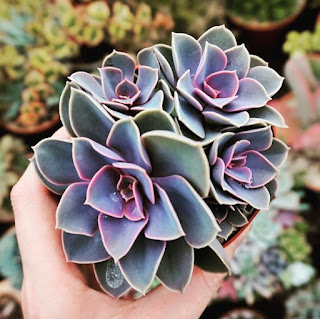Bear Paw Succulents: How to take care of Cotyledon Tomentosa
If you're on the lookout for a succulent that stands out from the crowd, look no further than the delightful Bear Paw succulent (Cotyledon tomentosa). Named for its uncanny resemblance to little bear paws, this unique plant is not only adorable but also relatively easy to care for and propagate. In this guide, we'll explore the ins and outs of Bear Paw succulent care, ensuring you can grow and multiply these fuzzy wonders with confidence.
Light and Location: Finding the Sweet Spot
Bear Paw succulents are native to South Africa, and like most succulents, they adore sunlight. Provide them with bright, indirect light for the majority of the day. If you're keeping them indoors, a south or west-facing window is ideal. Outdoors, they thrive in well-lit areas with some protection from scorching midday sun.
Soil and Potting: Fluffy Roots Need Room to Breathe
The key to a happy Bear Paw succulent lies in well-draining soil. Use a succulent or cactus mix with added perlite for optimal drainage. Ensure the pot has drainage holes to prevent waterlogging, as Bear Paws are susceptible to root rot. Repot every 2-3 years or when you notice the soil has become compacted.
Watering Wisely: Don't Drown the Bears
Bear Paw succulents have unique watering needs. Allow the soil to dry out between waterings, and water sparingly during the dormant winter months. Overwatering can lead to root rot, so err on the side of caution. Water thoroughly but ensure excess water can escape from the pot. If you are unsure about when to water a plant moisture meter can take out the guesswork.
Temperature Tolerance: Keep it Cozy, Not Too Toasty
Bear Paws prefer moderate temperatures, ideally between 65°F to 75°F (18°C to 24°C). While they can tolerate occasional temperature drops, it's best to protect them from frost, as extreme cold can damage their leaves. Keep them indoors during chilly nights or winter months if you live in a colder climate.
Fertilizing Facts: A Light Paw with the Fertilizer
During the growing season in spring and summer, feed your Bear Paw succulent with a diluted, balanced fertilizer every 4-6 weeks. Avoid over-fertilizing, as Bear Paws are not heavy feeders. Too much fertilizer can lead to leggy growth or other issues.
Propagation Prodigies: Growing Your Bear Paw Family
One of the joys of owning Bear Paw succulents is the ease with which they can be propagated. The most common method is through stem cuttings. Simply snip a healthy, non-flowering stem, let it callous for a day or two, and then plant it in well-draining soil. Keep the soil consistently moist until you see new growth, which indicates successful rooting. You can use rooting hormone if you think you might need a little help,
In the world of succulents, Bear Paws stand out as charming, low-maintenance companions. By providing them with the right light, soil, and watering regimen, and by mastering the art of propagation, you'll find yourself surrounded by a thriving Bear Paw family. Enjoy the journey of caring for these furry succulents, and watch as they add a touch of whimsy to your indoor or outdoor garden. Happy growing!
.jpeg)
.png)







